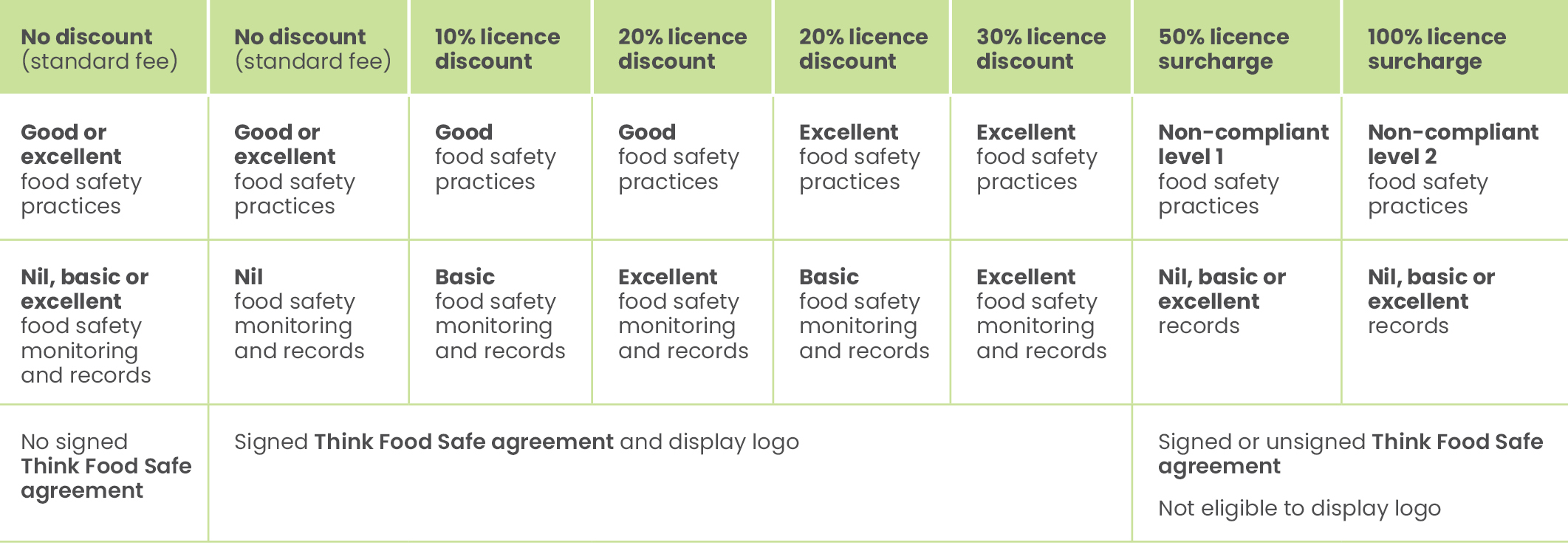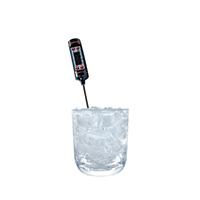Businesses
Businesses that monitor the highest risk food safety components of their business, such as the temperatures of refrigerated foods, can quickly identify food safety risks and take action to prevent larger problems.
Think Food Safe encourages businesses to proactively monitor food safety and uphold the Australian Food Safety Standards to reduce risk to consumers.
How to sign-up to the Think Food Safe program:
- Read and sign the 'agreement to display Think Food Safe logo' form available here.
- Return the signed document to Council's Health Services in person at a Customer Service Centre, or email to ceo@bundaberg.qld.gov.au
What is required?
- Maintain Food Safety Standards in accordance with the Food Act 2006 (hygiene, cleanliness, temperature control, premises maintenance, and prevent cross contamination). Compliance with these standards is assessed during inspections conducted by an Authorised Officer.
- Maintain food safety records. Records must be up-to-date with corrective actions recorded when appropriate. Compliance with best practice record keeping is assessed during inspections by an Authorised Officer.
What are the required record types?
Check and record:
- Temperature control of all food storage and display areas twice daily - download the template here.
- Food receipt by checking temperature and food condition on delivery - download the template here.
- Thermometer calibration at least monthly - download the template here.
- Cleaning in accordance with a cleaning program and schedule - download the template here.
- Other records applicable to your food business (e.g., Food Safety Program, 2hr/ 4hr, cooling cooked food).
Benefits for my business
Businesses that sign up for the program, maintain compliance with the Food Safety Standards and keep up-to-date food safety monitoring records are rewarded with:
- A Think Food Safe sticker to display at your business
- Eligibility for an annual licence fee discount of up to 30%* (applies to category 2 and category 3 businesses only).
- Reduced inspection frequency
Is there a penalty for not signing up?
Businesses that do not opt into Think Food Safe are not penalised.
Assessment of the business' food handling practices continues to occur against the same Food Safety Standards.
Businesses that are scored as non-compliant with the Food Safety Standards will receive an increased annual licensing fee regardless of whether the business has signed up to Think Food Safe. (Refer to the table below).
If the business does not opt into the Think Food Safe program but still complies with the Food Safety Standards, the standard annual licencing fee applies; however, the Think Food Safe sticker cannot be displayed at the premises.
How do the scoring and discount system work?
Think Food Safe scores are determined based on the most recent food safety inspection by an Authorised Officer. The inspection produces both a food safety result and record result which are combined to calculate the annual licence fee discount.
Download a fact sheet with more information here.
Calculation of licence fee discount:
Those who sign up to the program, maintain compliance and display the Think Food Safe logo will be rewarded with licence fee incentives and less frequent inspections.
All compliant businesses that have opted into Think Food Safe and hold an annual food licence are eligible to display the Think Food Safe logo.
*Only category 2 and category 3 businesses are eligible for a discount (i.e. most takeaways, restaurants, cafes, and manufacturers). Businesses such as non-profits, home-based businesses and water carriers are not eligible for the fee discount.
50% or 100% fee increases apply to all businesses assessed as non-compliant level 1 (N1) or non-compliant level 2 (N2) regardless of Think Food Safe opt in status.

Resources for Businesses
Food Safety Monitoring and Records
- Download the Temperature control log book
- To get a hard copy of the temperature control logbook, please contact Council's Environmental Health Services, or request one at your next inspection.

Tips for good temperature control
These tips will help accurately measure the core temperatures of food in your refrigerators and cold rooms.
Measuring temperatures using the Jar Method
- Obtain a jar, bottle or a similar container for each refrigerator.
- Drill a hole in the lid and fill the jar with water.
- Label each jar with an identification label (e.g. A, B, C, D).
- Place each jar in a central location or near hazardous foods (meat, dairy) in each refrigerator.
- Use the hole in the lid to insert the probe thermometer and check the temperature.
- Wait for the temperature reading to stablise and record the temperature.
- Measure the temperature at least twice a day (morning and afternoon/ evening).
Thermometer calibrations
Check that your thermometer is reading accurately using the below methods.
Ice method for calibrating your probe thermometer (easy and safe)
- Fill a glass with ice.

- Top up the glass with cold water to create an ice slurry.
- Stir the slurry and insert the thermometer probe in the ice water and leave for 2-3 minutes for the temperature to stabilise.
- Thermometer should read between +1°C and -1.0°C.
Boiling point calibration for your probe thermometer (proceed with care)
- Heat a saucepan of water on the stove.
- Wait for the water to come to a rolling boil.
- Insert the probe thermometer into the boiling water and allow 2-3 minutes for the temperature to stabilise.
- Thermometer should read between 99°C and 101°C.
What if the readings are not accurate?
- Try replacing the battery or selecting the reset button. Repeat the calibration (above) to check if this was effective.
- Analogue thermometers can be manually adjusted to read correctly. Repeat the calibration to check if the adjustment is effective. Digital thermomters often cannot be adjusted and will need to be replaced if required.
- Record the result of the calibration and any corrective actions required.
Other Resources
- Incoming goods record - food receipt log
- Cleaning schedule and program
- 2/4 Hour rule - Alternative method of compliance (if applicable) - please discuss with one of Council's Environmental Health Officers
- Recall procedure (for manufacturers) - FSANZ recall information
- Food safety program (high risk facilities only)
